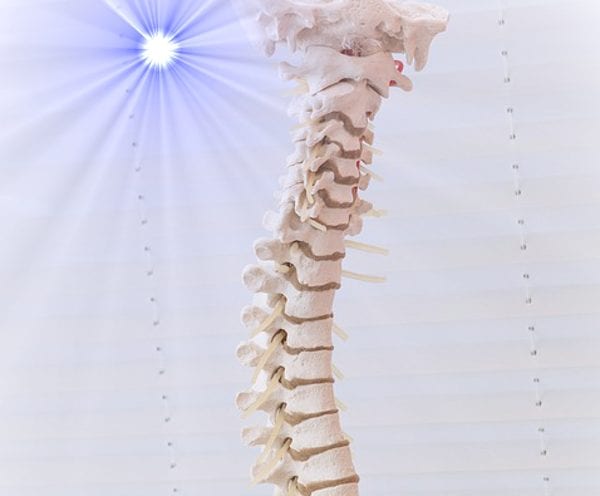 “How to restore intervertebral discs?” – a question that is most often asked by people who have problems with their back.
“How to restore intervertebral discs?” – a question that is most often asked by people who have problems with their back.
Intervertebral discs perform three main functions:
- providing mobility and flexibility of the spine
- softening of impacts to which the spine is exposed, to maintain the vertical position of the body
- keeping the spine in a level position
These three functions are performed in close interaction with the muscles and ligaments of the back.
Most of the problems with the back are connected with the intervertebral discs. Often people ask for help only when the pain can no longer be ignored, and the doctor can ascertain the degeneration of the spinal disc, the intervertebral hernia or other degenerative processes, lumbago, subluxation of the vertebrae and the like.
You should pay attention to the health of the discs, if the spine has lost its former mobility, flexibility and ability to withstand shocks. The situation is aggravated by the fact that traditional methods of treatment do not bring results and are aimed at masking the symptoms with dangerous pain killers, with the help of which they hope to hide the cause of the disease. They offer the patient to resign themselves and live with the problem, instead of finding out the source of the ailment and eliminating it.
There are two causes of damage to the intervertebral disc:
- Pressure that the disc is not able to absorb
- Decrease or loss of the ability of the disk to regenerate
A healthy spine can absorb pressure at very high loads. However, most people are constantly strained muscles, ligaments and nerves in the back – this can also cause problems. This stress affects the performance of the three main functions of the disk (providing mobility, damping, keeping in a flat position) and contributes to the appearance of both of the above-mentioned causes of intervertebral disc damage.
Chronic tension of ligaments and back muscles affects their ability to absorb and maintain a uniform pressure. As a result, the work on the extinguishing of external tremors almost completely switches to intervertebral discs, which are not designed to perform the functions of muscles and ligaments.
STRENGTHEN IMMUNITY AND ACTIVATE LIFE FOR EVERYTHING FOR 15 MINUTES A DAY!
The interaction of the muscles and ligaments surrounding the intervertebral disk greatly affects the blood flow and innervation of this area. The intervertebral discs are devoid of blood vessels, therefore, blood does not flow directly into them – this is the reason for their slow regeneration. However, the discs are supplied with blood, and with it nutrients, through the capillaries of the vertebrae. In the case of tension and intense muscle contraction, the process of blood supply slows down or even stops, which leads to wear and gradual degeneration of the intervertebral disc.
Recovering the intervertebral discs The restoration of the natural ability of the muscles and ligaments of the back to support and cushioning and the renewal of the blood supply are two conditions for stopping the degenerative process and initiating the regeneration process.
Our body has the capacity for self-healing, it is only necessary to provide the conditions that will enable it to do so. Namely:
- relax tight muscles and ligaments of the back
- relax congested vertebrae and joints
- improve blood flow in the back area, which will enrich the intervertebral discs with nutrients necessary for their recovery
- increase the flow of nerve impulses in the back region, which will allow the brain to identify areas that need regeneration
Image credit: Derks24
